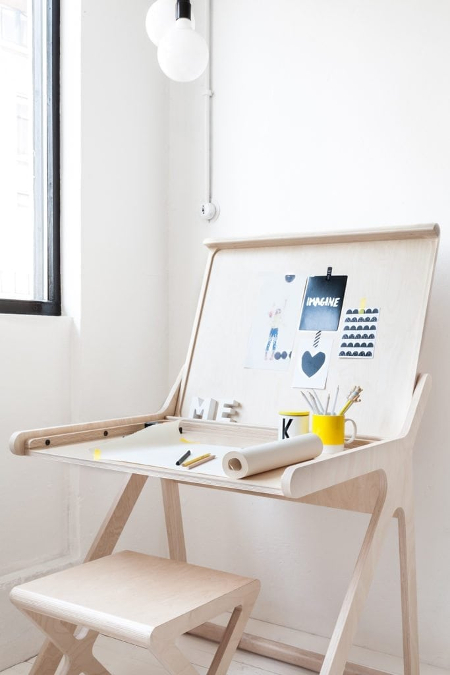
Image source: K Desk by Rafa Kids
Encouraging your little ones to sit still and do their homework isn’t always easy. With toys and TV providing an enticing distraction, keeping them focused can feel like you’re fighting a losing battle. The best solution? A dedicated study space, just for them. Whether it’s at the kitchen table, tucked under the stairs, or in a corner of their bedroom; here’s how to create a space that succeeds.
Perfect Location
Where you set up your study zone will depend on the age and nature of your child. A young child needing help with their sums may benefit from working at the kitchen table with mum and dad. While a teenager revising for their GCSEs will likely prefer a quiet space, away from the bustle of family life.
You don’t need to dedicate a whole room to studying; any corner of the home can become an inspiring and productive workspace.
Home(work) Comforts
A sturdy work surface, quality task lighting and a comfortable, supportive chair are workspace essentials. If your child will be using a computer, make sure it’s set up correctly to protect their posture. Comfort can aid in focus and productivity, but it’s also extremely important for general health and well-being.
For some children, comfort will be their own desk and chair. For others it might be the sofa and a lap tray. If your child uses a standing desk at school, they may also want one at home.
Keep it Organised
A tidy, organised space is distraction-free and productive. Invest in some colourful organisers to prevent homework from going missing and pens being left strewn across the kitchen table. With a place for all their supplies, your kids will never have an excuse to not do their homework. It also helps maintain your sanity if their study space is in a communal area.
Colour Psychology
Colour psychology is a fascinating thing. Extensive research has shown that colour has a profound impact on mood and productivity. For example, blue is considered a calming colour that inspires confidence and aids concentration while yellow is energising and positive. Use colour (sparingly) in your study space to help your child perform better.
Use shades of blue, green and yellow mixed with neutrals like white and grey to create a calm but inspiring environment. Steer clear of intense bright colours like red, pink and purple as these can be too stimulating and thus distracting.
Get Personal
Personalise your child’s study space and make it a more enticing place to be with wall art and decoration. To stay on theme (and on task), choose educational pieces like globes, fossils, star maps and natural history prints. If you’re working from the kitchen or dining room table, keep it simple with just a few framed prints for the wall. If a child has their own space, consider a blackboard or pin board so they can create their own wall art.



